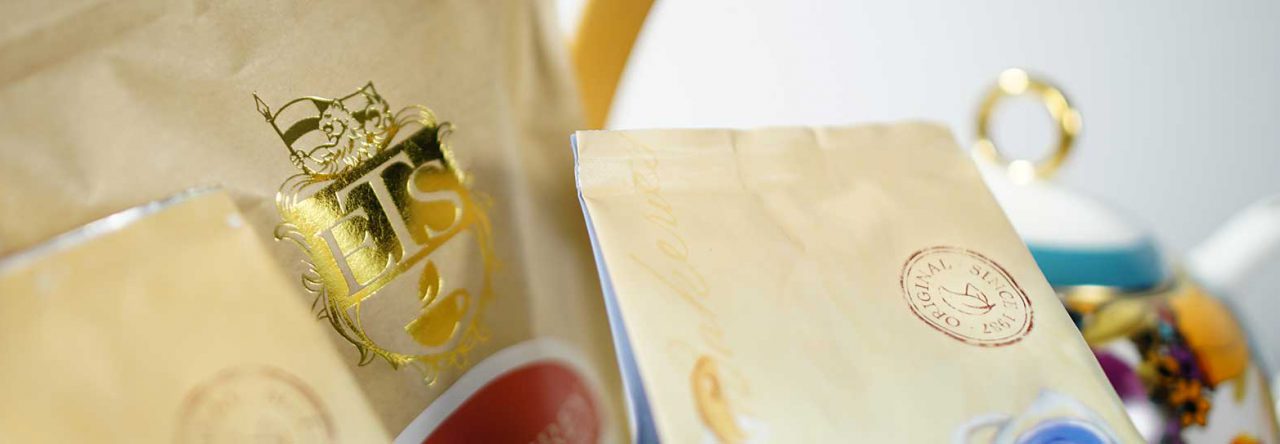
Darjeeling teas are all the same, right? Wrong! This tea growing area in the West Bengal region of India among the Himalayan mountains boasts quite a variety, due in large part to the plethora of tea estates there. While some Darjeeling teas live up to the nickname “the champagne of teas,” others are quite different from this picturesque description.
Since there are dozens of tea estates in Darjeeling (the count ranges from 68 to 100, depending on where you look), it would be a little too complex to look at them all here. So, I picked a few whose teas are readily available.
Mim Tea Estate
Located in the Darjeeling East Valley of Darjeeling at an elevation of about 6500 feet. The high elevation and relatively cool weather slow plant growth and limit production to about 254,000 lbs annually. The second “flush” is considered the best, having a bouquet that is complex and that rises up strong from the tea liquid. For some the taste is nutty while others find it more fruity like black currants or Muscat grapes. Look for “2nd Flush” on the label. 50 grams of tea leaves make about 22 cups of never-to-be-forgotten tea.
Arya Tea Estate
Their name means “respectable” and “best” in the Indian language, and their teas live up to the name (I tried some 2009 flushes a while back). Originally named “Sidrabong” by the Buddhist monks who founded it in the early 1800s, the estate elevation ranges from 3000 to 6000 feet and has 300 acres planted. From the people who pluck the teas, to those who process, test, and package those leaves, they are all highly skilled and really know tea.
The teas produced there include:
- Pearl — Extremely fine and unusual white tea. Retains “two leaf and a bud” appearance. Delicate, almost wine-like taste.
- Topaz — Slightly pungent oolong. Clean character.
- Emerald — Green tea with a floral/fruity aroma.
- Ruby — Redder than usual Darjeeling black teas, strong flavor.
- Clonal — Classic orthodox black tea that can be enjoyed plain or British-style (with milk and sugar).
Goomtee Tea Estate
Founded in 1899. Sits on the mountain slopes up about 3000 to 6000 feet and grows Chinese varietals of the tea plant (Camellia Sinensis) in ideal conditions (cool to moderate temperatures and plenty of rain). I tried some samples of this tea, too, a while back (Goomtee Yellow 2nd Flush 2009 and Goomtee FTGFOP1 2nd Flush 2009) and was so pleased, having previously only tasted “generic” Darjeeling tea. Small wonder at the marvelous taste. The staff take tea very seriously, from plucking just the right tea leaves off the plants to processing those leaves in the factory. The teas are sold according to their “flush” (a period of growth on the tea plant).

Soom Tea Estate
Nobody ever said tea was an easy crop to grow, especially when the tea fields are 5200 feet in elevation on slopes angled at about 45 degrees. Mountain ponies to the rescue! Some of the bushes on this estate are over 130 years old, and their leaves are in such demand that they are literally rushed to market in Germany and elsewhere. Look for a First Flush Soom tea rated TGFOP1. It is the first harvest after winter dormancy and is picked during March and the first part of April. The tea steeps up to a lightly greenish liquid with a delicate, round muscatel flavor.
Margaret’s Hope Tea Estate
One of the better known estate teas from Darjeeling and one of the first tea estates (founded around 1864) in that region of India. Originally named “Bara Ringtong,” the current name is from one of the owner’s daughters who died on the return voyage to England after visiting the estate in the 1930s. The estate covers 585 hectares and produces 617,000 lbs of tea per year as part of the Goodricke Group of Companies. The old tea bushes remain, producing teas with that muscatel characteristic so identified with Darjeelings of high quality.
There are many more. But these will get you started. Select an estate tea to try and imagine yourself among those verdant hills, gazing at the majestic, snow-capped Himalayas. Enjoy!
Make sure to stop by A.C.’s blog, Tea Time with A.C. Cargill!



Leave a reply to Chocolate! Chocolate! Chocolate! (and Tea) « Tea Blog Cancel reply